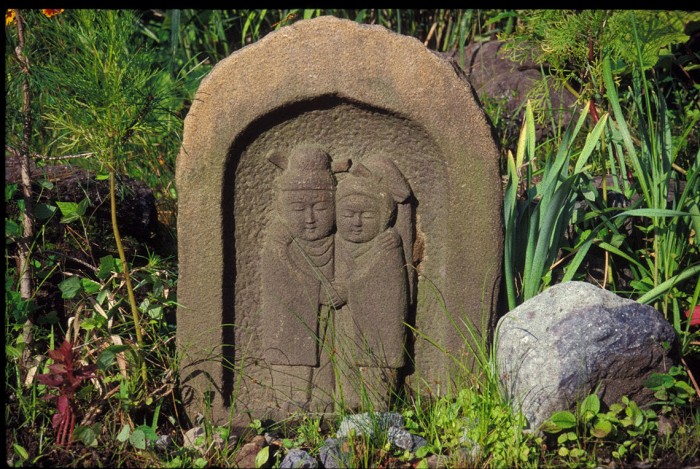
Dosojin are guardian deities who are closely associated with roads, travelers and local boundaries. They were assigned the task of keeping evil away from the Nakasendo and its travelers. Dosojin come in many forms, but are generally small, carved stones in a human shape. Often, they come in pairs of figures, but sometimes they are simply roughly formed stela. In Nagano prefecture, a particularly distinctive dosojin is a married couple inscribed together in stone, sometimes with the sun and moon behind them. Dosojin are frequently specialized in their intended function; some protect travelers, some protect the road itself and some protect the horses who bore some of the burden.
The guardian deities are found most often in the more isolated parts of the highway, where protection was most welcome, and near the mountain passes.

In addition to the dosojin, there are specific gods for the protection of travelers. For example, Jizo-san was one of the eight bodhisatvas who achieved nirvana, but returned to the world to help others achieve salvation too. Jizo-san performed a double duty as protector of travelers and of the spirits of children. Thus, Jizo-san are found near the passes, but also in the villages where they protect the spirits of dead children.
Another specialized god was the mato kannon or ‘horse head Goddess of Mercies’ which are found near rough stretches of the highway for the protection of the baggage carrying horses.

